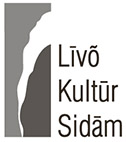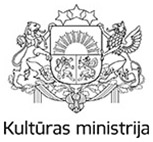LIVONIAN RING - PEARL OF THE BALTIC SEA
30/01/2011
The project “Livonia Maritima – Riga Gulf Joint Co-operation Region” aims foster common development and to enhance competitiveness of geographical territories located in the coastal areas of the Gulf of Riga according to principles of balanced and sustainable development. The activities of the project were centred to support the development of the Gulf of Riga region as a whole.
 The project “Livonia Maritima” is targeted to develop a common strategic platform for development of the region and a mechanism for further sustainable cooperation between region’s authorities. The project activities include informing the potential target audiences about the cooperation opportunities and tools that would foster common economic development, marketing the cooperation region and its common strategy as well as developing the common principles for sustainable development of coastal areas around the Gulf of Riga. More information about this project could be found here.
The project “Livonia Maritima” is targeted to develop a common strategic platform for development of the region and a mechanism for further sustainable cooperation between region’s authorities. The project activities include informing the potential target audiences about the cooperation opportunities and tools that would foster common economic development, marketing the cooperation region and its common strategy as well as developing the common principles for sustainable development of coastal areas around the Gulf of Riga. More information about this project could be found here.
Livonia is the historical settled area of the Livonians in the territories of Estonia and Latvia. Since the Germans invaded the Latvian and Estonian territories in the 13th c. through the Livonian land, the name Livonia would expand also to these concurred areas: in the first half of the 13th c. to the Latgalian land (modern Latvia) and to South and Central Estonia, in the second half of the 13th c. to Courland and Zemgale.
North Estonia is considered to be part of Livonia after its annexation to the possessions of the Order in 1347. In the years 1347-1561, Livonia (within its then boundaries also called Old Livonia) included the entire Livonian Order territory, the Riga Archbishopric and the Confederation of the Tartu, Oesel-Wiek and Courland Bishoprics, including a total of ca 108 000 km².
The name Livonia was fixed to the Polish domains north of the River Daugava after 1561 when Estonia surrendered to Sweden and the Courland Dukedom was created. As a result of the Polish-Swedish War in 1600-1629, Livonia was divided between the Livonian Province under Swedish rule, and Latgale, or so-called Polish Livonia, under Polish rule (Inflanty Polskie).
Several changes occurred as to the boundaries of Livonia in the 17th-19th c. After the Great Northern War (1700-1721), the south of Estonia and the north of Latvia developed into the Livonian Province within Russia (Russ. Lifljandija), which was formed finally only in the second half of the 19th c.
After the February Revolution, North Livonia was annexed to the Estonian Province on 12.04.1917 due to ethnical considerations, and with the independence of Estonian, it became part of the Estonian Republic. South Livonia with a Latvian population belongs to the Latvian Republic.
The Livonians are one of the smallest Finno-Ugric peoples preserved so far. The Livonians were first mentioned in the 12th c. in Nestor’s chronicles. Researchers believe about 15,000-28,000 Livonians to have lived in the 12th c. By now, there are slightly more than 200 Livonians left, and the Livonian language is spoken by a mere few dozens people.
Linguist Mati Hint writes: “… From the one-time mighty Balto-Finnic tribe in keen communication with their neighbours, the name Livonia on the maps and in history, Livonian place names in the early settled area of the Livonians, Livonian traits in some Latvian dialects, and several borrowed Livonian words in written Latvian have preserved …The people who have been in close contact with the present – perhaps last – generation of Livonians, who have had a taste of their language, the charm of their folk tales and tunes, and who know the dignity and national self-consciousness of the Livonians, sense the folly of the historic process having occurred there. It is a unique atmosphere that can be perceived in the Livonian villages – the anticipation of the national termination of the tiny fragment of an aged nation, reconciled to the imminence, yet self-conscious. To experience this is sad, calming, and sublime at the same time … The last Livonians already know that they have become an exotic rarity who people approach from afar – to wonder, or to examine, or to behold; this elevates their self-consciousness, yet hopeless self-consciousness – it is not easy to become a Native American in your own land, always being aware of the fact …”
Sources: Eesti Entsüklopeedia and “The Livonians – not yet in memoriam” by Mati Hint.






